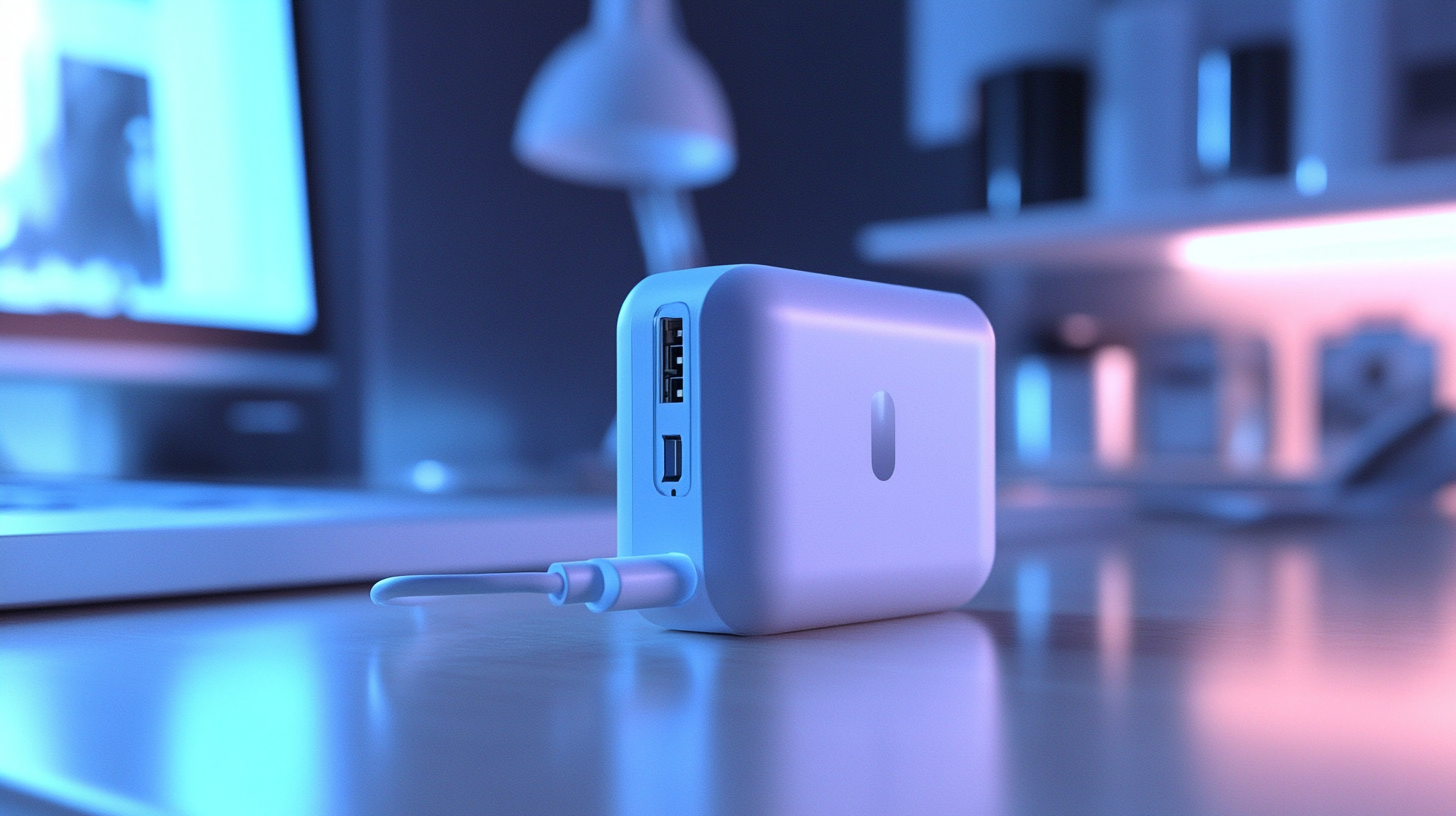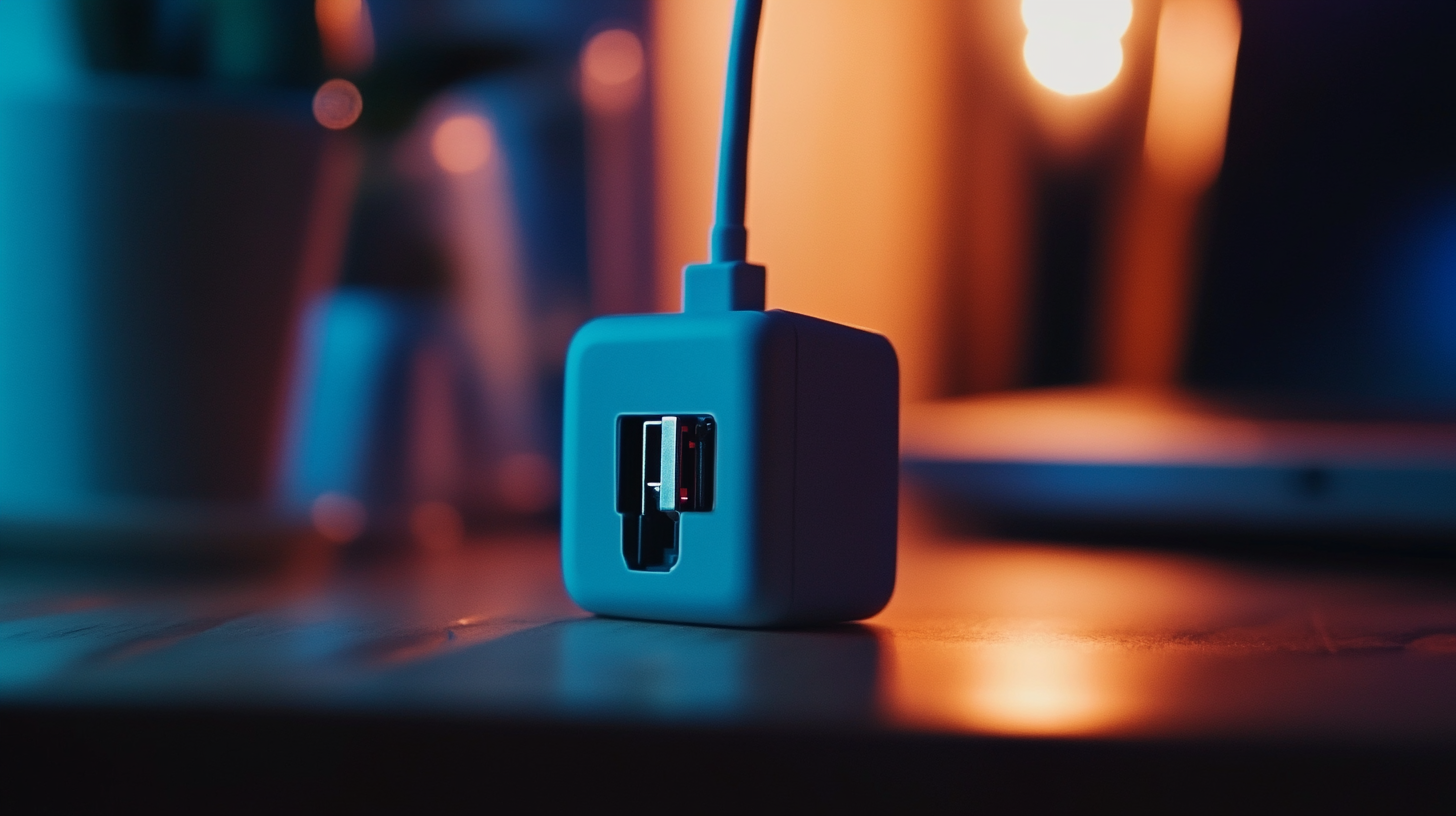Future Technologies Shaping Best Power Adapter Market and Winning Strategies for Success
The power adapter market is currently undergoing a significant transformation, driven by advancements in technology and growing consumer demand for energy-efficient solutions. According to a recent report by Mordor Intelligence, the global power adapter market is expected to reach $24.75 billion by 2025, growing at a CAGR of 6.3% during the forecast period. This growth is largely attributed to the increasing proliferation of portable devices and the need for reliable charging solutions. As we navigate this evolving landscape, understanding the detailed technical specifications of power adapters becomes crucial. This blog aims to explore the future technologies set to shape the power adapter market and discuss winning strategies that can empower businesses to thrive amidst intensifying competition. By delving into the intricacies of power adapter design and functionality, we will equip you with insights that not only enhance your knowledge but also position you for success in this dynamic industry.

Emerging Technologies Revolutionizing Power Adapter Design and Efficiency
The power adapter market is undergoing a transformative shift driven by emerging technologies that enhance design and efficiency. As AI technologies proliferate, data centers—central to AI operations—are facing unprecedented energy demands. A projected surge in energy usage for AI from data centers highlights a critical challenge, with energy consumption anticipated to rise at a pace outstripping supply. However, AI is uniquely positioned to address this dilemma by optimizing energy efficiency. Strategies that integrate AI-driven automation can help data centers reduce their operational energy costs while simultaneously expanding capacity to meet growing demands.
Innovative materials and smart technology integration are essential for redefining power adapter design, with an emphasis on sustainability. Research indicates that adopting advanced materials can improve overall energy efficiency by 30-40%. Additionally, industries are called to action, as the push for renewable energy solutions becomes increasingly urgent, with expectations that clean energy sources will account for over 50% of U.S. electricity generation by 2030.
As companies embrace these technologies, those that prioritize eco-friendly innovations and efficient power delivery systems will likely dominate the competitive landscape of the power adapter market, paving the way for sustainable growth.
Key Features to Look for in Next-Generation Power Adapters
As the demand for more efficient and portable technology continues to rise, next-generation power adapters are evolving to meet the needs of consumers and industries alike. According to a report by Grand View Research, the global power adapter market is expected to grow at a compound annual growth rate (CAGR) of 6.8% from 2021 to 2028. This growth highlights the increasing importance of key features in power adapters, which are crucial for optimizing performance, safety, and user convenience.
One of the most significant features to consider in next-generation power adapters is the integration of fast-charging capabilities. A study by MarketsandMarkets reveals that the fast charger market alone is projected to reach USD 24.6 billion by 2025, driven by heavy usage of portable devices. Additionally, the shift towards universal compatibility with USB-C and Power Delivery standards ensures that consumers can use a single adapter across various devices, enhancing user experience and reducing electronic waste. Furthermore, the incorporation of smart technology that allows adapters to adjust output based on connected devices can significantly improve energy efficiency, aligning with the industry's move towards sustainable solutions. These innovations not only contribute to consumer convenience but also play a crucial role in shaping the future of the power adapter market.

Winning Strategies for Market Leaders in the Power Adapter Industry
In the rapidly evolving power adapter industry, market leaders must adopt innovative strategies to secure their positions. According to a recent report by Mordor Intelligence, the global power adapter market is projected to reach USD 29.66 billion by 2026, growing at a CAGR of 5.56%. This growth is driven by increasing demand for electronic devices and the rise of smart technologies.
Companies are leveraging this trend by investing in research and development to create highly efficient adapters that cater to diverse consumer needs, particularly in renewable energy solutions.
Moreover, collaboration is key to thriving in this competitive landscape. As highlighted by a study from MarketsandMarkets, partnerships between tech firms can lead to the development of cutting-edge products that not only enhance performance but also align with sustainability goals. For instance, energy-efficient adapters that comply with global standards such as ENERGY STAR can significantly reduce energy waste, appealing to environmentally conscious consumers. By combining technological innovation with strategic alliances, market leaders can navigate challenges and capitalize on emerging opportunities in the power adapter market.
The Role of Sustainability in Power Adapter Development and Adoption
In recent years, sustainability has emerged as a crucial factor in the development and adoption of power adapters. As global awareness about environmental issues rises, manufacturers are increasingly prioritizing eco-friendly materials and energy-efficient designs. Sustainable power adapters not only minimize environmental impact but also appeal to a growing demographic of environmentally conscious consumers. It’s essential for companies to align their strategies with sustainability goals to remain competitive in the evolving market.
**Tip: Consider implementing a life cycle assessment for your power adapters to identify areas for improvement in sustainability.** This tool can help highlight the environmental impact at every stage, from production to disposal, allowing companies to make informed and responsible decisions.
Moreover, integrating renewable energy compatibility into power adapters can significantly enhance their appeal. As more households and businesses adopt solar panels and other renewable sources, power adapters that can efficiently harness this energy will be sought after. Developing products that provide seamless integration with green energy solutions fortifies a brand’s reputation and can drive adoption.
**Tip: Collaborate with organizations focused on sustainability to share best practices and innovations.** Building partnerships can lead to new ideas, resources, and technologies that enhance overall product sustainability, ensuring a competitive edge in the market.
Future Technologies Shaping Best Power Adapter Market and Winning Strategies for Success
| Technology | Sustainability Impact | Adoption Rate (%) | Market Share (%) | Future Growth Potential |
|---|---|---|---|---|
| GaN Technology | Reduced energy loss | 30 | 25 | High |
| USB-C Power Delivery | Standardization reduces waste | 45 | 35 | Moderate |
| Smart Adapters | Optimizes power usage | 25 | 15 | High |
| Wireless Charging | Minimizes cables, reduces plastic | 40 | 20 | Moderate |
| Solar Powered Adapters | Utilizes renewable energy | 10 | 5 | High |
Consumer Trends Influencing the Future of Power Adapter Market Dynamics
 As the power adapter market evolves, consumer trends play a pivotal role in shaping its dynamics. Today's consumers are increasingly driven by
sustainability, pushing manufacturers to innovate and offer energy-efficient solutions. The rise of
electric vehicles and smart home technologies underscores a growing demand for adapters that not only meet functionality standards but also adhere to
environmental expectations. This shift is prompting companies to rethink their product designs and supply chains
to align with eco-friendly practices.
As the power adapter market evolves, consumer trends play a pivotal role in shaping its dynamics. Today's consumers are increasingly driven by
sustainability, pushing manufacturers to innovate and offer energy-efficient solutions. The rise of
electric vehicles and smart home technologies underscores a growing demand for adapters that not only meet functionality standards but also adhere to
environmental expectations. This shift is prompting companies to rethink their product designs and supply chains
to align with eco-friendly practices.
Moreover, the digital transformation is fueling a change in consumer behavior, with an emphasis on convenience and connectivity.
Consumers now favor versatile power adapters that can support multiple devices, reflecting their need for efficiency in a fast-paced lifestyle. As businesses adapt
to these trends, embracing technology and sustainability as core components of their strategy will be essential for success in the competitive power adapter market.
By understanding and addressing these evolving consumer demands, companies can position themselves as leaders in this dynamic landscape.
